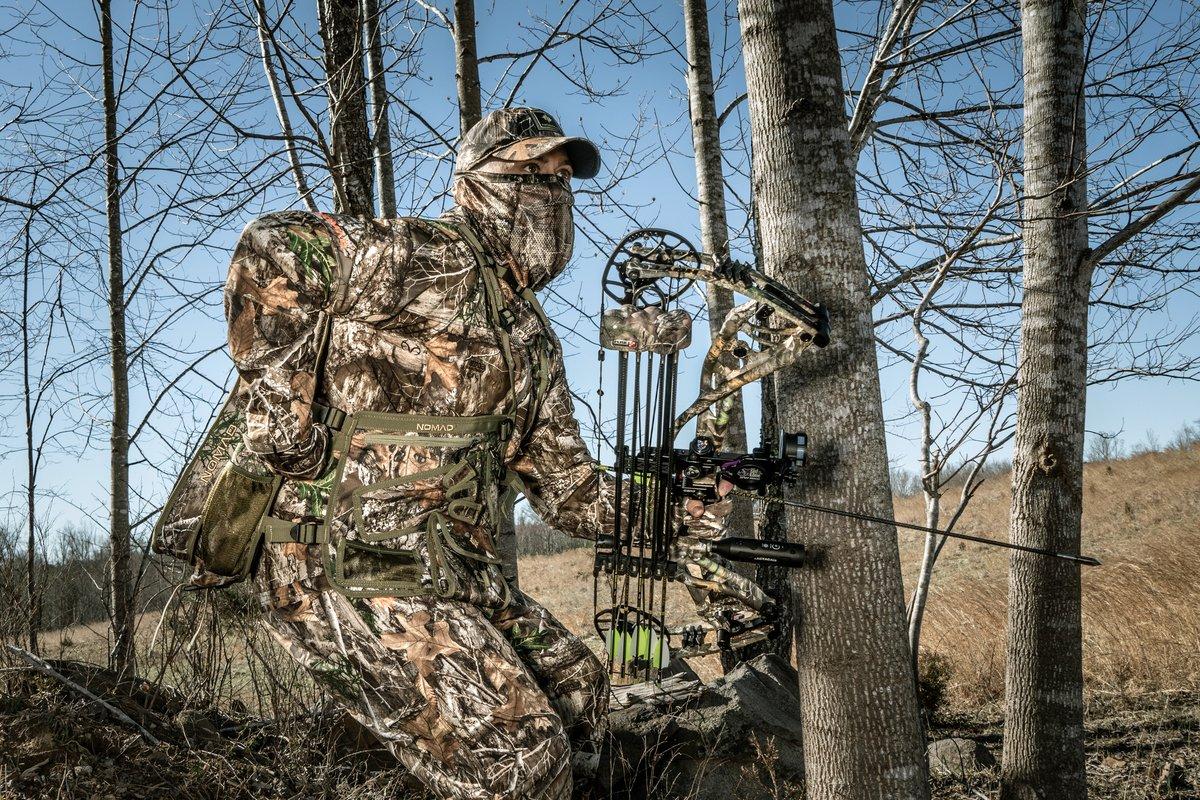Use your precious vacation days wisely with these proven scouting and hunting methods
How often have you been on stand and completely fooled every deer that came past? At least some of them crossed your trail, got downwind or spotted you. You may have ignored it if they were just does or small bucks. But those deer didn't ignore it. Through body language, they communicated danger to every other deer they contacted for the next several hours, or longer.
Deer react differently to signs of human intrusion depending upon where they find it. Usually, in the fringes of their core areas, they accept human scent and don't react as negatively to it. But human intrusion in sanctuaries is another story.
I've mapped out a different way to think about your hunt this year. By starting cautiously and increasing your pressure in stages, you keep the maximum number of deer from realizing they are being hunted for as long as possible while still hunting good stands every day.
The only exception? Opening day of the regular firearms season. Hunt your best stands first. When lots of other hunters are in the woods and the deer are being prodded into moving, you need to be in your best stand.
The Wild Card
The only unknown is wind direction. It may not cooperate perfectly, so don't get too hung up on sticking to the rules of this outline. But just as importantly, don't deviate from its spirit. In other words, don't hunt sensitive, high-activity areas until the end of the week, regardless of wind direction.
Day No. 1
Hopefully, you have at least one stand hanging in a low-impact travel route. This is a great starting point. It's easy to approach and hunt without spooking deer. Figure out the best route to the stand to avoid the maximum number of deer.
Day No. 2
If your stands are already hung, move on. If not, hunt location No. 1 in the morning and then shift over to location No. 2 at midday. Carry a stand in with you. Don't make a special trip to put it up during this part of the season. That's too much impact.
Ideally, this spot is located between two bedding areas used heavily by does. Bucks will travel between the bedding areas regularly as the rut starts to peak. Choose a spot that funnels them by your treestand. If the wind is right, don't be afraid to sit in stand No. 2 several times during a weeklong hunt.
Don't Miss: 8 Reasons Your Rut Hunt Stunk
Day No. 3
Again, if your stands are up, move on. If not, hunt location No. 2 in the morning and carry a stand to location No. 3 at midday. Edge a little closer to the suspected hotspot on the property. Increase the odds a little by finding a crossing that brings in travel patterns from at least three directions. Again, if possible, access it by walking through creeks, ditches and other routes that conceal your movements.
Day No. 4
You have three good choices for your morning hunt: locations No. 1, 2 or 3. Which one you choose depends upon wind direction, what you saw from each stand the first time you hunted it, and whether or not you got busted by deer.
Then, pack in (or move) a treestand for the afternoon hunt. Focus on the best, most-isolated food source available. Does should be coming to it, and bucks will follow. You are now very close to your hunting area's core, which you've protected dutifully.
Carry your stand in and pick the spot that offers two things: a wind advantage and a way out at the end of legal shooting time. Getting back to your vehicle will be tough, but do what you have to do. Choose the best available exit route that spooks the least deer.
Don't Miss: How to Hunt the Phases of the Rut
Day No. 5
Have this spot prepped in advance of the season. It's primarily a morning spot. And it's right on the fringe of the best doe bedding.
Location No. 5 is great because bucks should come to the bedding area looking for does for the better part of the morning. Find a low-impact access route. Take advantage of any ditches or ravines to avoid being seen or heard when approaching the stand.
Day No. 6
Push a little closer to where you think bucks are spending daylight hours the most. It's closer to their bedding, and your impact here is greater and has the potential to do more damage to your chances if not properly managed. That's why we've saved it for the end of your hunt. Again, like location No. 5, this is a morning spot.
You should plan on getting in early to beat the deer back into the cover. Some will begin drifting back well before dawn. Stay on stand until at least noon. Then, if the wind allows, slip back into the food-source stand you hunted the previous afternoon. Or, choose the spot that produced the best afternoon sit thus far. It's worth taking a bit more risk since the hunt is almost over.
Don't Miss: How to Find Deer Hunting Truth in a Rut Full of Opinion
Day No. 7
This is a free day. Hunt the stand that's produced the best results. Don't be nearly as conservative since it's the last day. Of course, you don't want to bump deer out on the way to the stand. You still have to hunt smart. Go with your instincts.
In summary, a gradual increase in pressure is the key to success when you have a limited area and an entire week to hunt it. Don't burn it out right away. But by the end of the hunt, you have nothing to lose. Only then does it make sense to be aggressive.
Check out more stories, videos and educational how-to's on deer hunting.








